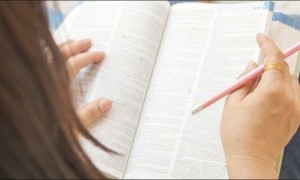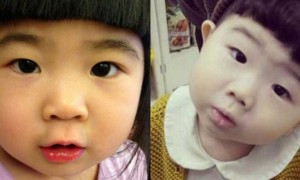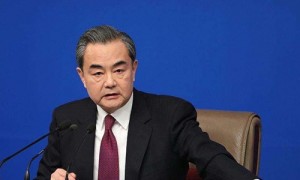The Buddha statue with an intact mummified body inside was bought by Amsterdam collector Oscar van Overeem in 1996, who now claims to have swapped with another buyer for several Buddhist art objects.
Villagers in China's southeastern province of Fujian recognized it as their stolen Zhang Gong statue when the statue was on exhibition in Hungary in March 2015.
Van Overeem agreed that the Buddha comes from the province of Fujian, but insisted that it is not the statue stolen from the villagers' temple.
He once agreed to return it if his conditions were met. When negotiations failed, the villagers filed a lawsuit against him in the Dutch court.
WHO IS THE NEW HOLDER
At the hearing, van Overeem stated that the new holder of the statue is a "collector-investor-intermediary," who "is aware of the mummy controversy and political sensitivities and prefers to remain anonymous."
When asked to disclose the name of the new holder, or email exchanges that reflect the negotiation of the deal and the conditions under which there was an exchange, the Dutch collector refused.
Under the Dutch Civil Code, such an agreement is contrary to good morals, and is an affront to decency and public order, therefore is void, Dutch lawyer Jan Holthuis representing the Chinese villagers told the court.
The lawyer cited an email signed and submitted by Van Overeem as proof which states that the Dutch collector reached this agreement when he learned that the villagers hired lawyers to take legal action in the Netherlands.
"By taking the statue away, the collector caused a presumption of a fraudulent act, namely preventing the enforcement of a claim to return Zhang Gong, if the court would so decide," commented Holthuis.
Two weeks ago, the villagers filed a demand asking the court to require the defendant to disclose the identity of the new holder.
Van Overeem asked the court to dismiss the demand by the villagers immediately on formal grounds. But the judge refused and ordered him to submit a statement to challenge the claim within six weeks.
"This is good. The other party has the right to make a statement on the reason why they think they cannot disclose the identity, and we can still reply to their statement. Then the judge will make a decision on it. It might take months," Holthuis told the press.
When the new holder is known, the Chinese villagers will seek to make him part of the legal proceedings to answer their claims that the Zhang Gong Buddha statue should return home, he said.
IS THE BUDDHA ZHANG GONG?
The nearly three-hour hearing was also dominated by the debate over the identity of the statue. Is he Zhang Gong, the 11th century monk who has been worshipped for generations in two Chinese villages, or not?
"It is not their statue," van Overeem reiterated to Xinhua after the hearing.
In court he read several reports, emails and a CT scan to show that a hole in the hand and a wobbling head, two characteristics of the Zhang Gong statue, did not exist in the statue he bought.
When asked about the Chinese characters of "Liu Quan," the name of Zhang Gong, as well as "Pu Zhao Tang," the name of the village temple, written on the linen roll found in the statue, he said "the linens were added 200, 250 years later. It is not an automatic proof that it belongs to the mummy."
When the judge inquired about the possibility of seeing the Buddha for an evidence check, van Overeem said the new holder wants to remain unanimous.
On behalf of the villagers, Holthuis showed the court numerous similarities between the statue and Zhang Gong, arguing that the villagers are entitled to have their statue returned to its original place.
"There is objective evidence that Zhang Gong is Zhang Gong. Each time Mr. Van Overeem comes back to two arguments -- no hole in one hand and no loose head. But we have no independent investigation because he did the CT scan, and now the Buddha is no longer in his possession," he told Xinhua.
BURDEN OF PROOF
The Dutch lawyer argued for "reversal of the burden of proof" in this case.
"Mr. Van Overeem does not have a purchase invoice, nor any document to show the origin of the Buddha," Holthuis told the court. "Registers of the Chinese government do not show any export permit for this Buddha. Besides, a permit for export of the Zhang Gong Buddha would never have been granted."
"A comparative study of the statue for proof or return is no longer possible because of his actions," he added.
Invoking recommendations adopted by the Ekkart Committee, a Dutch government body in charge of returning looted artworks from World War II that remain in the hands of the Dutch state, the lawyer argued that it is up to van Overeem to prove that the statue is not Zhang Gong.
Its recommendations are recognized by the Dutch Tweede Kamer, the lower house of the parliament.
Since the villagers' ownership of the Buddha statue has been proven with a high degree of probability and van Overeem has not provided legally convincing indications to the contrary, "it is up to Mr. Van Overeem to prove that the Buddha is not Zhang Gong," Holthuis told Xinhua.
A UNIQUE CASE
Other issues were brought up in court such as the legality of Chinese villagers standing in Dutch court, whether or not van Overeem bought the statue in good faith and questions over the mummified monk being a 'corpse' and therefore not subject to ownership under Dutch law.
The defendant claimed that the "Chinese village committee is not to be referred to as a natural person or legal person" under the Dutch Code of Civil Procedure and "the claimants should be declared inadmissible in their claims."
"We already argued that the village committee is a special legal person under the Chinese law and there is jurisprudence or case law in the Netherlands saying that even when you do not have legal presentation in terms of a legal entity, you can still file a claim," Holthuis told the press.
The lawyer nonetheless admitted the case is an interesting and unique one.
"A lot of issues of this case have no case law," he told Xinhua. "Each time we almost have to invent the next step. But it doesn't mean we will fail."







